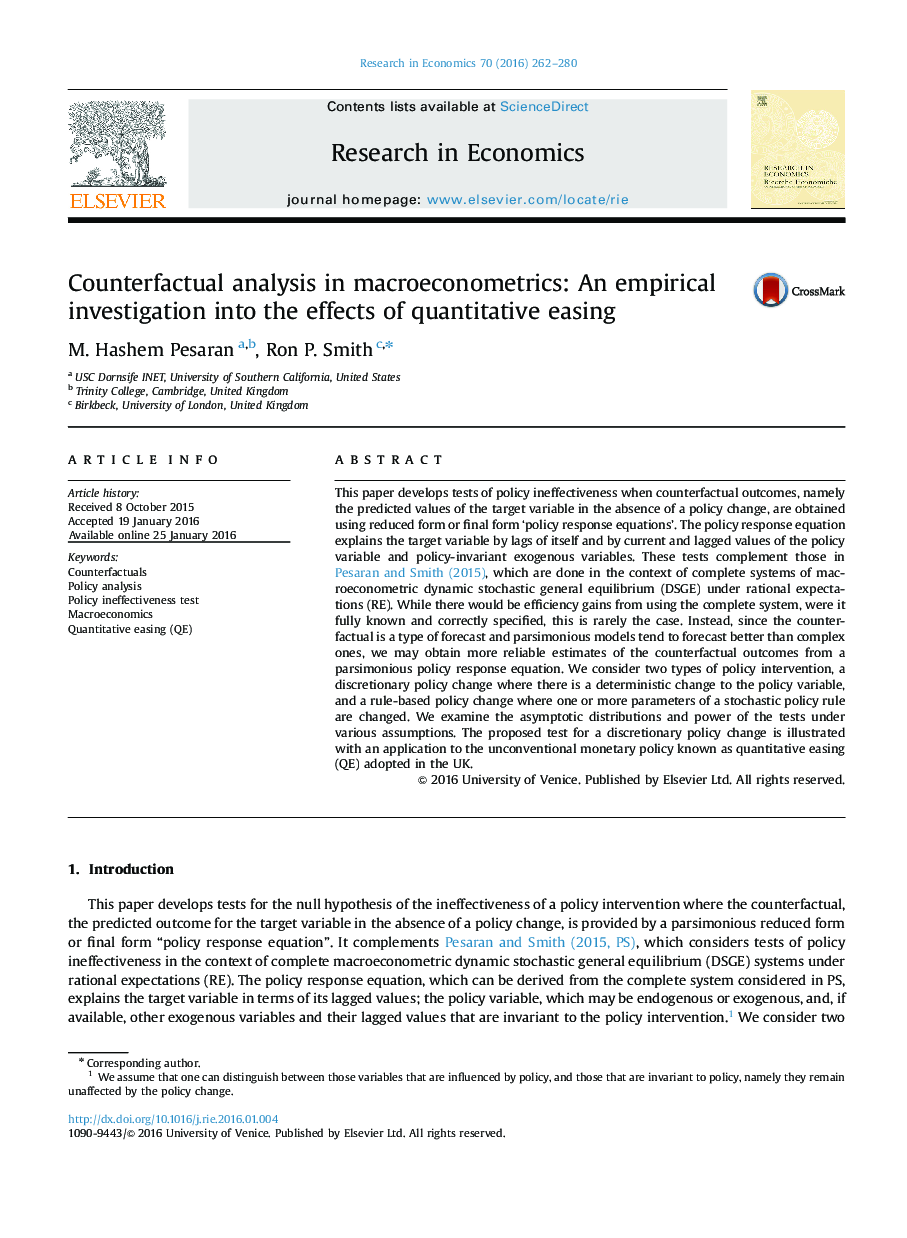| Article ID | Journal | Published Year | Pages | File Type |
|---|---|---|---|---|
| 984416 | Research in Economics | 2016 | 19 Pages |
This paper develops tests of policy ineffectiveness when counterfactual outcomes, namely the predicted values of the target variable in the absence of a policy change, are obtained using reduced form or final form ‘policy response equations’. The policy response equation explains the target variable by lags of itself and by current and lagged values of the policy variable and policy-invariant exogenous variables. These tests complement those in Pesaran and Smith (2015), which are done in the context of complete systems of macroeconometric dynamic stochastic general equilibrium (DSGE) under rational expectations (RE). While there would be efficiency gains from using the complete system, were it fully known and correctly specified, this is rarely the case. Instead, since the counterfactual is a type of forecast and parsimonious models tend to forecast better than complex ones, we may obtain more reliable estimates of the counterfactual outcomes from a parsimonious policy response equation. We consider two types of policy intervention, a discretionary policy change where there is a deterministic change to the policy variable, and a rule-based policy change where one or more parameters of a stochastic policy rule are changed. We examine the asymptotic distributions and power of the tests under various assumptions. The proposed test for a discretionary policy change is illustrated with an application to the unconventional monetary policy known as quantitative easing (QE) adopted in the UK.
